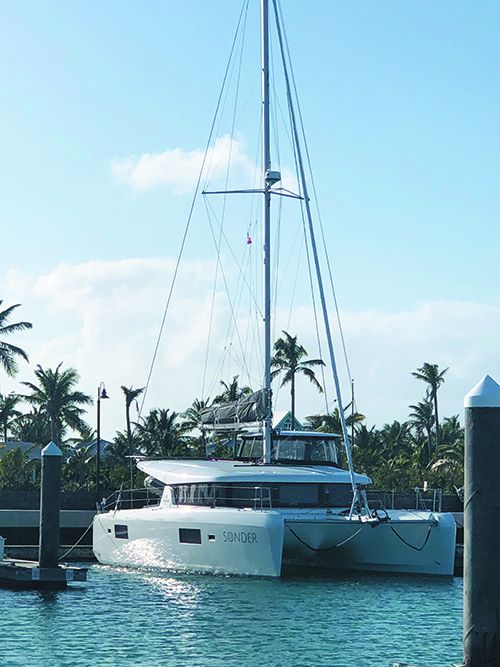Carbon Foam Battery?
I saw your article in about Firefly batteries (carbon foam) in the May 2015 issue of Practical Sailor “Can Carbon Fiber Batteries Meet the Hype?” I am looking at upgrading the batteries on my relatively new Lagoon 42 catamaran. I was wondering what kind of feedback you have received regarding these batteries or any others.
Jeff Robinette
Lagoon 42, SV Sonder
Falls Church, VA
At the time of that article, Firefly had plans to accelerate production in a factory in India, and the idea was that once that occurred carbon foam would be more competitive. According to Bruce Schwab, Vendee Globe veteran and founder of Ocean Planet Energy, the factory in India is open now. Although the company is now able to meet demand—they have plenty of their 450Ah x 4V (three in a series for 450Ah x 12V, or 6 in a series for 450Ah x 24V)—prices are expected to rise soon, although nowhere near those for lithium ion, which has been in the crosshairs of US trade tariffs. Schwab reminded us that carbon foam batteries won’t reach full potential under perpetual slow or weak charging sources (such as solar), as we discovered in our extensive follow-up test “Fighting Sulfation in AGM” in Practical Sailor May 2015 (originally posted online April 16, 2015). Schwab says the batteries will do better if you routinely give them a hard/fast charge from an alternator and/or shore charger. Ideally, the charge rate should be approximately 46 A for each G31 (.4 C). This brings up an important point that we’ve emphasized before—when switching to a battery that calls for different charging regimens (set points for tapering charging, etc.), you may have to change or reprogram your charger and other components in the system so as not to harm the batteries or the system itself. Any time you change battery types, you want to make sure your new charging system maximizes battery potential. In addition, we’d not advise mixing-and-matching battery types for your house banks. In any case, if you think your existing batteries do not meet your needs, then we recommend that you examine at the system as a whole — not just the batteries.
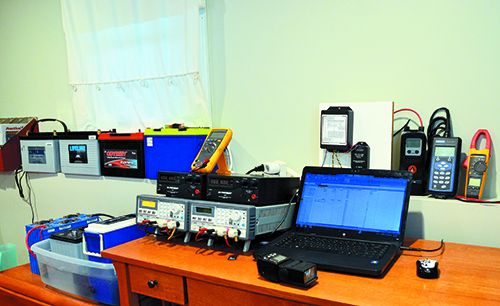
were tested and re-tested during our look at the effects
of sulfation on batteries in the December 2017 issue.
KEEL MATERIAL
It would be useful for Practical Sailor to list which manufacturers use iron encapsulated in their keel. I am surprised to learn that many old sailboats have iron instead of lead as encapsulated ballast.
Edward Addeo
via Practical Sailor Online
Good idea. Our boat reviews (www.practical-sailor.com/topics/sailboat_reviews) typically indicate the keel material, as do the manufacturers. We’ll start working on a list. Owners associations are a good source of information for older boats, as are builder specs. However, the specs for older boats (1970s-’80s especially) aren’t always accurate, so do your homework. Concrete and low-grade iron scrap found itself into more than a few Taiwan-built vessels from this era. A good surveyor can help determine ballast material, but this can be expensive and sometimes involve some destructive testing. If you have a ballast surprise to share, we’d like to here it. Send it to the editor at [email protected].
Multi-purpose Corkscrew
Regarding your article on tools, (“Get Home Sailboat Toolkit,” PS October 2018), a corkscrew will help fish out broken bits from the water pump impeller. A bicycle spoke has a little hook on the end that can also help fish little things out of holes and in a pinch you can do all the things you used to do with coat hanger wire on that old junk car you used to drive, except it’s stainless.
Dave Brezina
Tartan 10, Ratty
Montrose, IL
Consequential Damage Coverage
Having been a professional marine insurance broker for 32 years and an avid reader of your magazine for much of that period, I was disappointed to read about consequential damage coverage in your January 2020 issue. While I don’t dispute that having such coverage is valuable, to suggest having insurance coverage without this feature is equivalent to ‘going bare’ is dangerously inaccurate. Until a decade or two ago when BoatUS introduced this feature into their policy, all marine insurance policies excluded losses arising from a consequence of normal wear and tear or gradual deterioration. If there were no value to insurance with such a limitation, the marine insurance market would, of course, never have existed. The author dismisses coverage for hurricane damage as barely worth anything, but this, in fact, is the largest source of financial loss to U.S. boat owners. The author also blithely dismisses any value of coverage for theft, and, regretfully, doesn’t even mention common types of losses such as lightning, collision, and groundings as things that are covered whether or not a policy provides consequential damage coverage. And even most of the examples cited in the article as consequential damage excluded from coverage by a typical insurance policy are not accurate. Other than the rotten backing plate, none of the other claims should be denied, because they are not the consequence of normal wear and tear or gradual deterioration, and, if they were denied, the boatowner needs a better marine insurance broker acting as an advocate.
Gary Golden
Via Practical Sailor Online
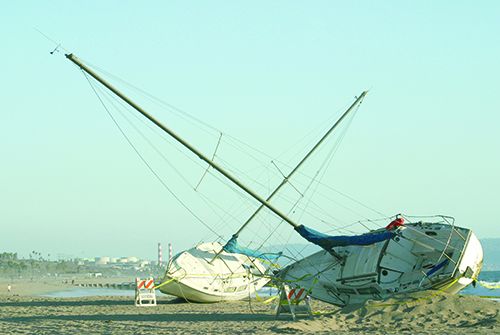
severe storm in September 2004. Insurance is meant to cover these types of events.
Thanks for your letter, you make an excellent point. The main object of the article was to urge sailors to closely check their policies. In going over his own policy and some scenarios with the experts at BoatUS, a major insurer in the U.S., our writer discovered that many incidents described in the article that he thought were covered by insurance might not be covered—or the insurer could not say for certain without seeing an actual claim. Indeed, if you live in an area where hurricanes are a risk, that is a very strong reason to carry insurance. Freezing conditions is often a cause of sinking in the mid-Atlantic states, and we found that some policies do not cover damage due to freezing conditions.

solutions that would help us keep our bottom clean
and minimize environmental harm.
Bottom Paint Choices
I sail a Hunter 38 in the mid-Chesapeake that currently has a Pettit, non-ablative [hard] bottom paint that needs to have new antifouling paint applied. What suggestions do you have about whether I should continue with this kind or switch to an ablative that I used on a prior boat? I want at least a two-year paint and am also interested in maximizing potential speed of the boat.
John Fillipini
Hunter 38
Tracey’s Landing, MD
The first step is to check with manufacturer for compatibility. If it is compatible, make sure you follow its directions for prep. For guidance on which paint will work best—hard or ablative—check the 2014 report (see “Bottom Paints by Region,” Practical Sailor, March 2014.) To supplement our report, we recommend you talk with your boatyard owner, local marina operators, and local sailors with long experience in the region. As for speed, we’ve not tested this, but if you intend to burnish your finish for maximum smoothness, hard “racing” paints are best suited for this approach.
Caring for Seacocks
Regarding your recent article on seacock maintenance (see “Caring for Seacocks,” Practical Sailor March 2016). I had a frozen 1½-inch Wilcox Crittenden seacocks on my 1982 Sea Sprite. I also used a torch, sprayed with PB Blaster, but nothing would work. I finally got the nerve to remove it from the boat. Judicious use of a butane torch and leverage got it out with no trouble at all. On the bench, I soaked it in PB Blaster in a plastic bag for a few weeks. That did the trick to break the corrosion, then I used regular valve-lapping compound to true it out. A new thru-hull set in 3M 4000 made it leak-free and easy this season.
Alfred Voskian
Via Practical Sailor Online
Sailboat salvage yards
I am curious as to whether you have ever done an article on sailboat salvage yards. With the number of sailboats being scrapped due to age, storm damage, etc., I would think that there would be a market for used parts such as rigging, winches, electronics, etc. Yet even in my area (Massachusetts) I have found it difficult to locate anyone that sells the parts I am looking for. As an example, I would like to get a radar pole, and would be happy to get a decent used one for half the $1,000 new price, but can’t find one anywhere.
Walter Gotham
1987 Freedom 28, Nova Vita
Salem, MA
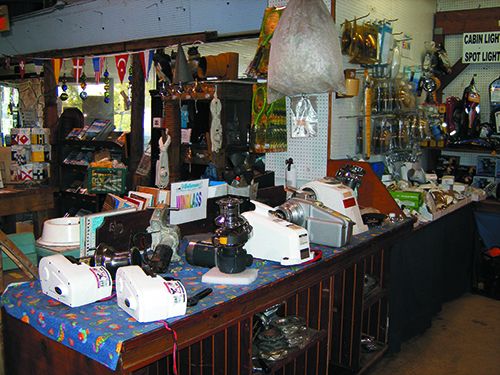
featured in our April 2011 issue of Practical Sailor.
Check out our April 2011 issue of Practical Sailor online (posted March 1). The article “The Treasure Hunting Guide to Used Sailing Gear,” offers a detailed guide on shopping at used gear chandleries—what to look for, and what to avoid. Radar poles are often in high demand, but you might be able to get a good deal on one, depending on region. For you, check
www.marineconsignment.com and www.massmarineparts.com. These are websites linked to brick and mortar consignment stores that serve New England sailors.
Check those Welds
Regarding your recent report on weld inspection (see “Welds on Your Boat Require Special Care,” Practical Sailor, November 2018). As a welding inspector, I wanted to make a clarification of your destructive DIY weld analysis. It is not uncommon for a fillet weld to fail during this type of test. Under these conditions, being “bent back on itself” is the least favorable direction of force that these type of weld can resist. The main point of the analysis, simple visual examination, is of “how” the weld failed. Also, this is only one of several tests to determine if a weld passes full inspection, per the American Welding Society criteria. As you said, the recreational boating community might require these standards, although any reputable machine shop should have qualified welders. If you are a do-it-yourself welder, then I would recommend you review these or similar standards and learn some their inspection criteria. Another good point is to research the common boat materials and learn about welding alloys and filler material. There are numerous resources on the internet and even your local welding supply shop.
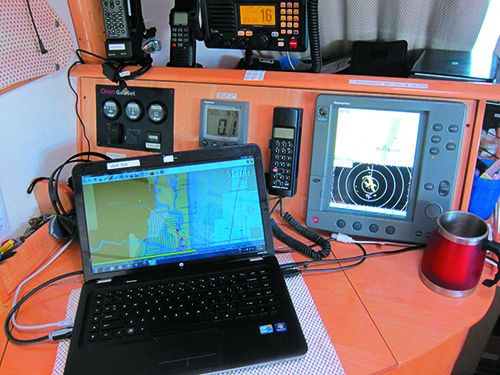
a laptop running free or nearly free open source navigation
systems, several of which we reviewed in the June 2007 issue.
Ray Nic
Via Practical Sailor Online
Chart Defender
Regarding the blog post on NOAA getting out of the chart printing business, “NOAA Charts Coming to an End,” I am more of a traditionalist, and like the paper charts and keeping up with my navigation skills. There are sailors who just cannot afford the new gadgets and some who just don’t want them. If NOAA goes this route there needs to be a provision that paper charts can be ordered as needed by sailors of this style.
Don Wray
Cape Dory Typhoon
Eagle Lake, MI
Corrections
The new HIT solar panels from Solbian (see “Product Update” PS November 2019), are semi-flexible, not rigid.
Credit for photos of the Universal diesel in our report on air filters (see PS January 2020) belongs to Les Troyer, of the Catalina 36/375 International Association www.catalina36.org.


































